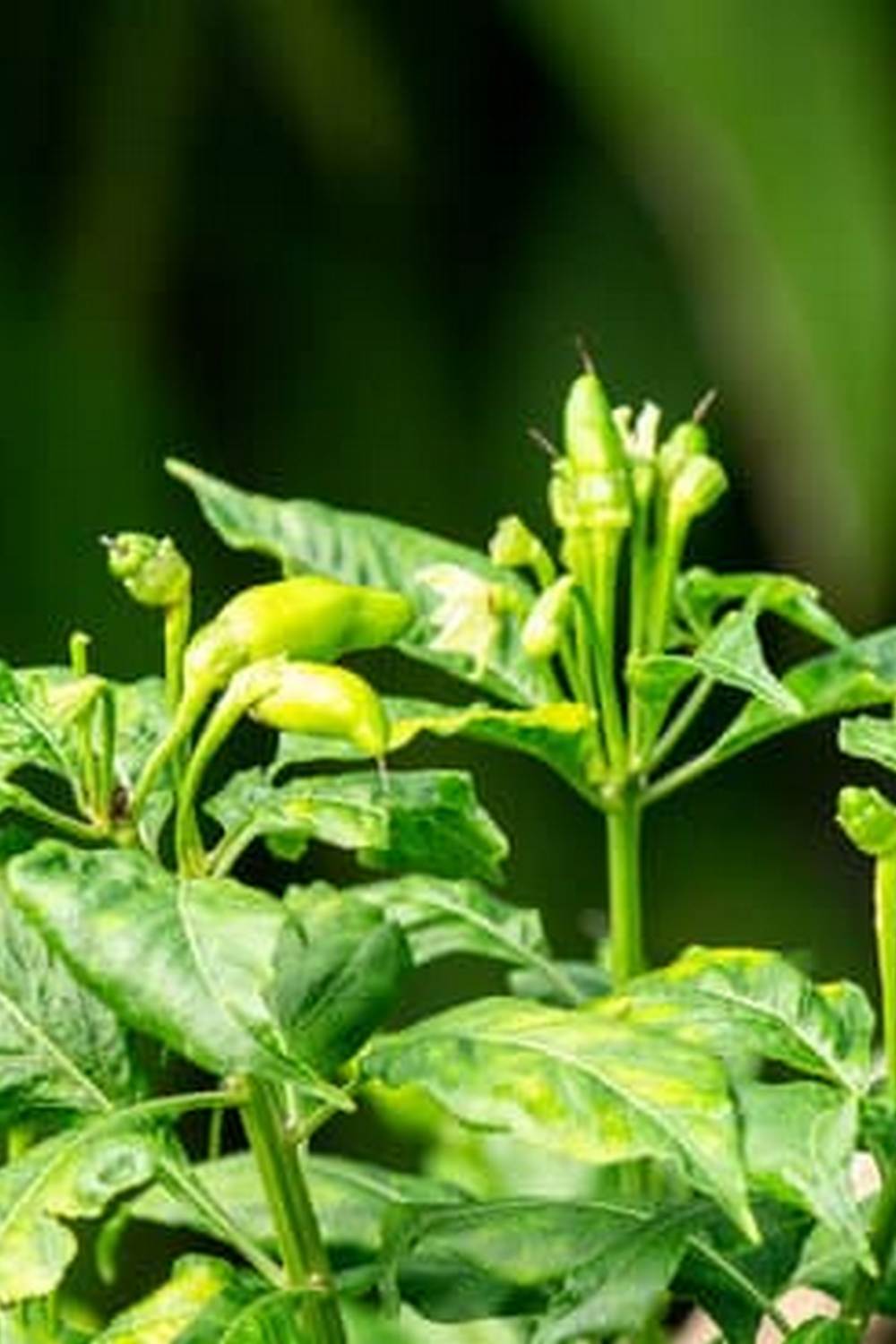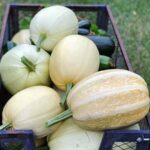Small vegetable gardens layouts offer a practical and efficient way to grow your own produce, even in limited space. With the right planning and strategic layout, small vegetable gardens can provide ample fresh, organic vegetables for your household. In this article, we will explore the benefits of small vegetable gardens and the importance of strategic layouts to maximize productivity.
When it comes to planning a small vegetable garden, understanding your space, sunlight, and soil conditions is crucial. By making the most of the available space, you can create a bountiful garden that meets your needs. Additionally, choosing the right vegetables for a small garden is essential for maximizing space and ensuring a successful harvest. In this article, we will delve into compact vegetable garden layout ideas and creative ways to arrange your garden for maximum productivity.
As limited space is often a challenge for urban gardeners, we will also discuss vertical gardening techniques for small spaces. Utilizing vertical space can significantly increase the growing area and allow for more varieties of vegetables to be grown.
Furthermore, companion planting in small vegetable gardens is an effective way to enhance growth and deter pests with strategic plant pairings. With maintenance and care tips tailored specifically for limited spaces, you can keep your small vegetable garden thriving throughout the growing season.
Planning Your Small Vegetable Garden
When planning a small vegetable garden, it is crucial to first understand the space, sunlight, and soil conditions in your designated area. By assessing these factors, you can optimize the layout of your garden for maximum productivity and success.
Begin by measuring the dimensions of your garden space and taking note of any obstacles or limitations such as trees, structures, or uneven terrain. This will help you determine the available growing area and plan accordingly. Additionally, consider the amount of sunlight that reaches the space throughout the day. Most vegetables require at least 6-8 hours of direct sunlight, so it is essential to choose a location with adequate sun exposure for your small vegetable garden.
Next, assess the soil conditions in your garden area. Conduct a soil test to determine its pH level, nutrient content, and texture. This will provide valuable information on which vegetables will thrive in your specific soil and what amendments may be necessary for optimal growth. Understanding these key factors will guide you in selecting the right vegetables for your small garden and planning their layout effectively.
| Factors | Consideration |
|---|---|
| Space | Measure dimensions; Consider obstacles |
| Sunlight | Determine sunlight exposure; Choose appropriate location |
| Soil Conditions | Conduct soil test; Assess pH level and nutrients |
With a clear understanding of your space, sunlight, and soil conditions, you can plan a small vegetable garden that is well-suited to thrive in its environment. This thoughtful approach to planning will set the stage for a successful and bountiful harvest from your small vegetable garden layouts.
Choosing the Right Vegetables for a Small Garden
When it comes to creating a small vegetable garden, choosing the right vegetables is essential for maximizing space and productivity. By selecting plants that are well-suited for small spaces and can thrive in close proximity to one another, you can make the most of your limited gardening area. Here are some tips for choosing the best vegetables for your small garden:
- Consider compact varieties: Opt for vegetables that have been specifically bred to take up less space. Compact varieties of tomatoes, peppers, cucumbers, and squash are perfect for small vegetable gardens layouts as they can be easily grown in containers or small raised beds.
- Focus on high-yield crops: When space is limited, it’s important to prioritize high-yield crops that will provide a bountiful harvest without taking up too much room. Leafy greens like spinach, lettuce, and kale, as well as herbs like basil and cilantro, are all excellent choices for small gardens.
- Think vertically: Choose vegetables that can be trained to grow vertically, such as pole beans, peas, and vining varieties of cucumbers and squash. Vertical gardening techniques can help you make the most of your available space by utilizing trellises or other support structures.
By carefully considering the types of vegetables you plant in your small garden, you can ensure that you achieve maximum productivity without overcrowding your plants. Additionally< companion planting can also play a crucial role in optimizing your small vegetable garden layout.
Overall< with the right plant selection< even a small vegetable garden can yield an impressive harvest of fresh< healthy produce throughout the growing season< making it a rewarding and worthwhile endeavor.Compact Vegetable Garden Layout Ideas
When it comes to designing a small vegetable garden, the layout is crucial in maximizing productivity while making the most out of limited space. There are several creative ways to arrange your garden that can help you achieve a bountiful harvest, even in a small area. By strategically planning the layout of your vegetable garden, you can make the most of the available space while ensuring that each plant receives adequate sunlight, water, and nutrients.
Grid Layout
One popular layout for small vegetable gardens is the grid layout, where raised beds are organized in a grid pattern with equal spacing between each bed. This provides easy access to each plant for watering, weeding, and harvesting. It also allows for efficient use of space and creates a visually appealing arrangement.
Intensive Planting
Another creative approach is intensive planting, where vegetables are planted closely together in a concentrated area to maximize productivity. This method helps to prevent weed growth and conserve moisture in the soil. By carefully selecting which plants can be grown next to each other without competing for resources, you can make the most of every inch of your garden.
Square Foot Gardening
Square foot gardening is a compact and systematic approach to arranging your small vegetable garden by dividing the growing area into square feet sections. Each square foot is then used to grow different vegetables based on their size and space requirements. This method offers efficient use of space while simplifying maintenance and organization within the garden.
By considering these creative layout ideas for small vegetable gardens, even those with limited space can enjoy a productive and visually appealing garden. With careful planning and consideration of your specific needs and available resources, you can design a compact vegetable garden that meets both your practical and aesthetic goals.
Vertical Gardening Techniques for Small Spaces
Vertical gardening is a great solution for those with limited space, as it allows you to make the most of your vertical space by growing vegetables upwards instead of outwards. There are several techniques and ideas that can help you maximize the productivity of your small vegetable garden.
Container Gardening
One popular method for vertical gardening in small spaces is container gardening. Utilizing hanging baskets, wall-mounted planters, or even repurposed items like old pallets or shoe organizers, you can grow a wide variety of vegetables vertically. This not only saves space but also adds visual interest to your garden.
Trellising and Staking
Another technique for vertical gardening is trellising and staking. This involves providing support for vining plants such as tomatoes, cucumbers, and beans to grow upward rather than sprawling across the ground. Using stakes, cages, or trellises can help keep these plants off the ground and make the most efficient use of your small garden space.
Living Walls
For those who want to take vertical gardening to the next level, living walls are a stunning option. By utilizing specially designed structures or creating your own using frames and containers, you can create a beautiful display of vegetables growing vertically on a wall or fence. This not only adds a decorative element to your garden but also maximizes your growing area.
By incorporating these vertical gardening techniques into your small vegetable garden layout, you can enjoy a bountiful harvest even in limited space. Whether you choose container gardening, trellising and staking, or living walls, there are plenty of creative ways to make the most of your small vegetable garden.
Companion Planting in Small Vegetable Gardens
Companion planting is a gardening technique that involves planting different types of plants near each other to achieve mutually beneficial effects. In the context of small vegetable gardens, companion planting can be an effective way to maximize space, enhance growth, and deter pests without the need for chemical interventions. By strategically pairing compatible plant species, you can create a thriving ecosystem within your limited garden space.
Some common companion planting combinations for small vegetable gardens include:
- Planting basil near tomatoes to improve their flavor and repel pests such as aphids and hornworms
- Pairing carrots with leeks or onions to deter carrot flies and onion maggots
- Growing marigolds near a variety of vegetables to repel nematodes and other harmful soil-borne pests
In addition to pest control, companion planting in small vegetable gardens also focuses on enhancing growth and maximizing space utilization. For example, planting vining crops like cucumbers or peas alongside corn or sunflowers allows the vining plants to utilize the vertical space provided by the taller crops. This can be particularly beneficial in small garden layouts where horizontal space is limited.
It’s important to research and plan your companion plantings carefully, taking into consideration factors such as sunlight requirements, soil compatibility, and the specific needs of each plant. With thoughtful consideration of companion planting strategies, you can create a biodiverse and productive small vegetable garden that thrives without the need for excessive chemical inputs.
Maintenance and Care Tips for Small Vegetable Gardens
Maintaining a small vegetable garden requires attention to detail and consistent care. One of the most important aspects of maintenance is proper watering. In a limited space, it’s crucial to ensure that all plants receive adequate hydration without wasting water. Consider installing a drip irrigation system or using soaker hoses to deliver water directly to the roots of your plants, minimizing evaporation and runoff.
Fertilizing is another key component of caring for a small vegetable garden. With limited space, the soil may become depleted more quickly, so it’s essential to replenish nutrients regularly. Organic fertilizers are an excellent choice for small gardens as they provide long-lasting nourishment without the risk of over-fertilization, which can harm plants in a confined area.
Pest control is also vital for the health of your small vegetable garden. In a compact space, pests can quickly spread and cause damage to your plants. Utilize natural pest deterrents such as companion planting or introducing beneficial insects like ladybugs or praying mantises. Regularly inspect your plants for signs of pest infestation and address any issues promptly to prevent them from spreading.
| Aspect | Recommendation |
|---|---|
| Watering | Install drip irrigation or use soaker hoses for efficient watering. |
| Fertilizing | Use organic fertilizers for long-lasting nourishment without over-fertilization risk. |
| Pest Control | Utilize natural pest deterrents such as companion planting and beneficial insects. |
Success Stories and Inspiration
In conclusion, small vegetable gardens have the potential to be incredibly rewarding and productive spaces, even with limited square footage. By carefully planning and laying out your garden, choosing the right plants, utilizing vertical gardening techniques, and implementing companion planting strategies, you can maximize the productivity of your small vegetable garden. With a bit of creativity and dedication, even the smallest outdoor or indoor space can be transformed into a thriving oasis of fresh produce.
One of the most inspiring aspects of small vegetable gardens is the endless potential for unique and beautiful layouts. Whether it’s a compact container garden on a balcony, a vertical herb wall in a kitchen, or a raised bed garden in a backyard, there are countless success stories showcasing the creativity and resourcefulness of gardeners working within limited space constraints.
From lush arrangements of colorful vegetables to inventive use of trellises and hanging planters, these success stories serve as both practical examples and sources of inspiration for those looking to make the most of their small vegetable gardens.
As you embark on your own small vegetable gardening journey, remember that there is no one-size-fits-all approach. The key is to understand your specific space, sunlight, and soil conditions while also considering the needs and characteristics of different vegetables. By taking these factors into account and drawing inspiration from successful layouts, you can create a small vegetable garden that not only thrives but also brings joy and beauty to your home.
Frequently Asked Questions
How Do You Layout a Small Vegetable Garden?
To layout a small vegetable garden, start by choosing a sunny location with good soil drainage. Consider the mature size of your vegetables and space them accordingly. Use raised beds or containers to maximize space and make sure to leave pathways for easy access.
What Are the Best Vegetables for a Small Garden?
The best vegetables for a small garden are those that can be grown vertically or in compact spaces. Examples include tomatoes, peppers, cucumbers, lettuce, spinach, radishes, and green beans. These vegetables are well-suited for small gardens and can be productive in limited space.
What Vegetables Not to Plant Next to Each Other?
Some vegetables should not be planted next to each other due to their competing growth habits or susceptibility to the same pests and diseases. For example, potatoes should not be planted near tomatoes or cucumbers due to the risk of blight.
Similarly, planting onions near peas can inhibit the pea plants’ growth. Research companion planting to avoid these issues in your small vegetable garden.

If you’re looking to get into vegetable gardening, or are just looking for some tips on how to make your current garden better, then you’ve come to the right place! My name is Ethel and I have been gardening for years. In this blog, I’m going to share with you some of my best tips on how to create a successful vegetable garden.





